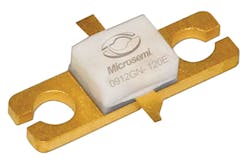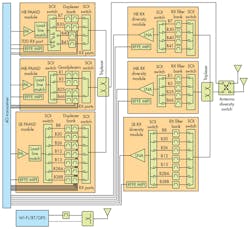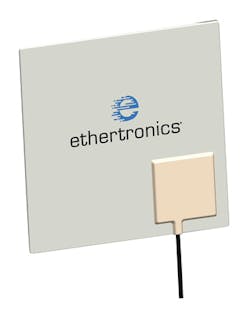5 Technology Areas to Watch in 2017
Download this article in .PDF format
When forecasting what 2017 has in store for the RF/microwave landscape, it led to one concrete conclusion: The industry is primed to continue delivering its share of innovative technology solutions. Both commercial and military applications demand cutting-edge devices, components, and systems as well as the latest design software and test-and-measurement equipment. And with companies focused on making 5G a reality, the industry shows no signs of slowing down.
Speaking with those throughout the industry revealed a number of predictions for 2017. For one, size, weight, and power (SWaP) constraints will be ever-more stringent for aerospace and defense systems. Radar applications will take advantage of emerging technology to offer performance that surpasses the capabilities of older systems. Of course, gallium-nitride (GaN) technology will play a key role in all of these developments.
Moreover, mobile communication demands will lead to challenging filter requirements. Proper antenna solutions are needed, too, as more people drop cable service. In addition, providers of design software tools and test-and-measurement equipment must deliver solutions to satisfy rapidly changing needs.
With these prognostications setting the stage, here are five industry sectors to keep a close eye on this year:
Semiconductor Technology
By now, GaN technology’s huge impact on RF/microwave technology should be apparent to all in the industry (Fig. 1). In 2017, we can surely expect to see GaN in heavy doses. One well-documented benefit of GaN lies in the realization of smaller form factors, making it vital when it comes to meeting today’s SWaP requirements.
“In 2017, we expect to see a continued push toward more stringent SWaP requirements for upgraded and next-generation aerospace and defense systems—particularly for radar applications,” says Kevin Harrington, director of strategic marketing, discrete products group, Microsemi. “New power lineups based on GaN-on-silicon carbide (GaN-on-SiC) provide higher power-added efficiencies (PAEs) and smaller form factors that were not possible in older radar systems. Combining GaN-on-SiC with continued advances in thermal design packages and smart chip design for peak RF and thermal performance will help continue to push the limits of SWaP requirements.
“Monolithic microwave integrated circuits (MMICs) will continue to have a critical role in advanced electronic-warfare (EW) solutions,” continues Harrington. “Mixed technology, gallium arsenide (GaAs), GaN, and silicon germanium (SiGe) each offer critical performance advantages. GaN MMICs have pushed higher power capability over wide bandwidths, while GaAs MMICs maintain higher linearity and low noise figure at lower power levels. Added functionality to standard building blocks will help system-level designers optimize the various lineups needed in EW and electronic-countermeasure (ECM) systems.”
Harrington believes there will be an ongoing move to more integrated solutions. He notes, “Higher levels of integration will also be a continued trend in 2017. This will happen either through multi-chip modules (MCMs) for higher power applications using GaN, GaAs, and silicon-diode technologies, or through SiGe BiCMOS for lower power, highly integrated RF integrated circuits (RFICs). This trend is seen in many market applications, including military communications, smart munitions, avionics, and radios.”
Filter Requirements
Intensifying demands of mobile communications have created a need for more advanced RF filter solutions (Fig. 2). Firms such as Qorvo and Broadcom represent two of the major players in this space. However, newer companies like Resonant and Akoustis are now making their presence felt, too.
“For 2017, band proliferation, higher data rates, and minimizing the number of smartphone models continue to drive the growth and complexity of filters,” says Mike Eddy, vice president of marketing at Resonant. “Hence, the expectation is that the number of filters sold will increase to more than 45 billion in 2017, according to [market research firm] Navian.”
Eddy adds, “These are the trends for filters in mobile devices, which are the largest filter market:
- Increasing number of filters per device: More RF paths within the device from multiple antennas and spectrum proliferation will continue to grow and require more filters. Thus, filter size and cost must continue to decrease.
- Increasing integration: RF front-end performance is crucial. Maximizing power-amplifier (PA) efficiency on the uplink and receiver sensitivity on the downlink will require optimization of the entire RF chain. As complexity increases, understanding the RF chain and any interactions between elements becomes crucial. For filters, optimizing the interface to the PA and the low-noise amplifier (LNA) will be required in the filter design process.
- Complex multiplexing: Carrier aggregation (CA) for higher data rates will drive more complex multiplexing, which in turn drives more complex filters.
- More demanding specifications: Isolation, loss, and power-handling requirements continue to create new challenges. Filters in the RF chain are a major contributor to loss, which is critical for total transmit (Tx) efficiency (and ultimately for the PA current draw and for battery life) as well as the total noise figure in the receive (Rx) path (and ultimately for the signal-to-noise ratio and the data rate).”
Antenna Solutions
Another key technology area that bears watching in 2017 is the antenna. Interestingly enough, the large number of people who are dropping cable service, or “cord-cutting,” has led to greater demands for adequate antenna performance, according to one company. Jeff Shamblin, chief scientist at Ethertronics, explains, “Adoption of video streaming is accelerating and the move is on to cancel cable subscriptions. The main drawback is that the local TV channels provided as part of a cable subscription are no longer available to the consumer. In 2017, we can expect around 24 million non-paying TV households.”
Shamblin is quick to point out how dropped cable service requires proper antenna technology. He explains, “The relevant problem to solve for cord-cutting systems is antenna selection and placement. A lot of neighborhoods with single-family homes have restrictions on placement of TV antennas outdoors. Additionally, for consumers living in apartments and condos, there are restrictions on roof access that add to the antenna siting task. The popular approach is to use a small antenna indoors to connect to the TV tuner to access over-the-air (OTA) signals.
“This current approach of placing a passive antenna at a location in a room in a home provides you the ability to sample the signal at that one location,” he notes. “Since this is an indoor environment, there will be reflected signals bouncing around the room. The antenna will in reality be picking up multiple signals and coupling them into the OTA receiver. The shape of the radiation pattern and polarization of the passive antenna is fixed, i.e., one radiation pattern only per channel and a fixed polarization state of the antenna. This fixed radiation pattern will not be optimized for reception of the multiple reflected signals in the room across all of the TV channels.”
According to Shamblin, utilizing an LNA in these scenarios is not the proper solution: “Attempting to improve a passive antenna by adding an LNA typically fails since the LNA will amplify noise along with the TV signal received by the antenna. As a result, the signal-to-noise ratio (SNR) is slightly lower than it is without the amplifier since the LNA has losses. LNAs are recommended when using an outdoor antenna and a long cable run, with the LNA providing the capability of boosting the signal at the antenna prior to the losses associated with the long coaxial cable leading to the TV.”
Ethertronics has developed technology that can help overcome those problems. “Our Active Steering technology provides the capability of generating four or more radiation patterns from a single antenna and to dynamically change the polarization state (Fig. 3). This dynamic ‘radiation mode’ capability, when coupled to an Ethertronics-supplied algorithm, allows for these multiple radiation patterns and polarization states to be sampled. The technology allows for the optimal radiation mode to be selected for use when acquiring an OTA channel for viewing. This will result in receiving a stronger TV signal in-home from an Active Steering antenna when compared to a passive antenna of equivalent size.”
Design Tools
Soon, 5G may transform the way that products are designed and built, with simulation software playing a key role. “In 2017, emerging 5G technologies and the increasing power of low-cost software-defined radios (SDRs) will change the way that engineers research, design, and build wireless products,” says Ken Karnofsky, senior strategist, signal processing applications, at MathWorks. “These technologies are driving deep integration of RF and digital technologies to implement millimeter-wave radios, massive multiple-input, multiple-output (MIMO) antenna arrays, and flexible multi-function radios for commercial, military, and public safety systems.
“Specifically, radios operating at millimeter-wave frequencies will employ extremely compact MIMO array designs, with the RFIC integrated with the antenna elements,” continues Karnofsky. “Similarly, 5G systems are expected to achieve high throughput at relatively low power by using hybrid beamforming techniques. These techniques partition the processing between RF and digital components to optimize SNR and efficiently focus transmitted signals on a specific location.”
According to Karnofsky, simulation tools that support multiple domains offer a tremendous advantage. “Highly integrated devices require engineers to design across traditional silos of expertise and use domain-specific tools,” he notes. “As a result, 5G and other advanced wireless-technology designers should rely on multi-domain simulation tools. By modeling the antenna, RF, and digital subsystems together, they can quickly explore alternative architectures and algorithms along with measuring the impact of design tradeoffs on system performance.”
Karnfosky also expects to see increased dependence on SDR technology for wireless applications. He elaborates, “We will also see expanded use of SDR technology to meet the need for hardware prototypes and testbeds for a range of wireless applications—including 5G. System designers and research and development engineers see an opportunity to use SDR hardware to speed development of these prototypes. But they often lack the field-programmable gate array (FPGA) or system-on-a-chip (SoC) programming expertise to implement their designs on that hardware.
“They will and should increasingly turn to a model-based design workflow that uses generation of portable HDL and C code from models,” says Karnofsky. “Using this workflow, they can design, prototype, and verify algorithms on a range of commercial SDR hardware and create production-ready IP for implementation on custom hardware.”
Changing Test Needs
New advances in wireless communications will have a major impact on test-and-measurement requirements. Several different technologies can be considered driving factors. According to Adam Smith, director of product marketing at LitePoint, “Big changes are coming to wireless. There is an explosion in new wirelessly connected products and new use models will value improvements in range, battery life, latency, and number of connected devices. Three major technologies will play a key role in these new products: IEEE 802.11ax, low-power wide-area networks (LPWANs), and millimeter-wave frequencies.
“IEEE 802.11ax is not simply the next version of Wi-Fi,” explains Smith. “It represents a fundamental change in the way that Wi-Fi operates. “Simplistically speaking, Wi-Fi is borrowing from cellular by adopting techniques used in LTE. Unlike LTE, which operates in a managed, licensed spectrum, Wi-Fi operates in the unlicensed spectrum on an ad hoc, on-demand basis. A successful launch of this technology will require products to manage the chaos of the unlicensed spectrum. Verifying that these devices play by the IEEE 802.11ax rules requires smarter test equipment. Equipment needs to be ‘packet aware’ and support near real-time power control. New test methodologies are needed to achieve the required manufacturing economics without sacrificing product quality.”
LitePoint is also offering test solutions to support LPWAN technologies. Smith notes, “LPWAN technologies, such as Sigfox, LoRa, and LTE Cat-NB1, seek to meet the emerging requirements for the Industrial Internet of Things (IIoT) market. These technologies address range, battery life, security, and quality-of-service. One challenge device makers will face is getting their products to market quickly with high quality. To make this easier, we provide ‘reference designs’ for test, delivering pre-validated chipset-specific solutions that accelerate product validation.”
The third factor that Smith believes will impact the test-and-measurement arena is millimeter-wave technology. He says, “Millimeter-wave technology represents the next frontier of wireless with nearly 20 GHz of pristine spectrum. The physics of this spectrum drives antenna beamforming technology, which in turn drives new ways of measuring these types of signals. Test equipment needs to be able to address OTA measurements of a variety of antenna arrays, ensuring that these arrays can efficiently ‘steer’ the energy to the end-user.”
Taking all of these potential advances into consideration, 2017 looks to be an eventful year for the RF/microwave industry. As 5G and other new technologies loom on the horizon, companies are focused on delivering the next generation of design and test solutions. Cutting-edge performance in terms of semiconductor technology will likely create headlines this year. And filter and antenna solutions will play key roles across many wireless fields in 2017. Stay tuned to Microwaves & RF, as we report on these unfolding developments.




